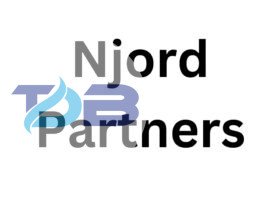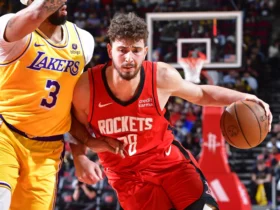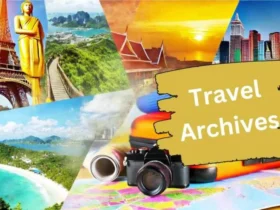In today’s digital landscape, video content is a powerhouse for communication and marketing. From engaging social media posts to informative tutorials and compelling advertisements, video has become a dominant medium for reaching target audiences. However, to truly maximize the potential of video content, expanding its reach beyond language barriers is crucial. This is where video translators come into play.
This comprehensive guide will explore how to effectively use video translators to broaden your audience and boost engagement.
Understanding Video Translators
Video translator tools are designed to convert video content into different languages, making it accessible to a global audience. These translators offer various methods for translation, including subtitles, dubbing, and voice-overs. Each method serves a unique purpose, and the choice depends on the specific needs of your content and target audience.
Types of Video Translation
- Subtitles: Subtitles display the translated text at the bottom of the video. This method is popular because it allows viewers to read translations while still hearing the original audio, preserving the video’s tone and emotion.
- Dubbing: Dubbing involves replacing the original audio with translated voiceovers. This method provides a seamless viewing experience for the audience, as it eliminates the need for text and allows for a more immersive experience.
- Voice-Overs: Voice-overs are similar to dubbing but usually involve less complete replacement of the original audio. They often overlay translated audio on top of the original, which can be useful for content where the original voice needs to be preserved.
Benefits of Using Video Translators
- Global Reach: Translating videos into multiple languages enables you to reach a broader audience, including non-native speakers who may not engage with content in its original language.
- Increased Engagement: Multilingual content caters to a diverse audience, increasing the likelihood of interaction, shares, and comments. This can significantly boost your content’s visibility and engagement rates.
- Enhanced Accessibility: Video translation makes your content more accessible to people with different language preferences and those with hearing impairments who benefit from subtitles.
Key Features to Look for in Video Translators
When selecting a video translation tool or service, it’s essential to consider several key features to ensure that the translator meets your needs effectively.
Accuracy and Quality
The primary goal of video translation is to provide accurate and high-quality translations that maintain the original message’s integrity. Look for tools or services that offer precise translations and support professional review processes to ensure quality.
Support for Multiple Languages
Choose a video translator that supports a wide range of languages and dialects. This capability is particularly important if your content aims to reach a global audience with diverse linguistic backgrounds.
Ease of Integration
The translation tool should seamlessly integrate with your existing video platforms and content management systems. This ease of integration will streamline the translation process and ensure that you can efficiently manage and distribute your translated content.
Customization Options
Customization features allow you to tailor the translation to fit your brand’s voice and style. Look for tools that offer options for adjusting subtitle appearance, voice-over tones, and other elements to match your brand’s identity.
How Video Translation Enhances Audience Reach
Expanding Your Audience
Video translation opens doors to new audiences who may not understand the original language of your content. By providing translated versions, you can attract viewers from different regions and linguistic backgrounds, thereby expanding your reach and influence.
Increasing Engagement
Localized content resonates more with viewers, leading to higher engagement rates. When people can consume content in their native language, they are more likely to interact with it, share it, and become loyal followers. This increased engagement can lead to greater visibility and a more substantial online presence.
Examples of Successful Global Campaigns
Many global brands have successfully used video translation to enhance their marketing efforts. For example, companies launching international campaigns often use translated video ads to ensure their messaging is effective in different markets. By tailoring content to local languages and cultures, these brands achieve higher engagement and brand recognition across diverse regions.
Best Practices for Effective Video Translation
Cultural Sensitivity
Ensuring that your translated content is culturally appropriate is crucial. Avoid translations that could be misinterpreted or offensive in different cultures. Work with translators who understand cultural nuances and can adapt the content to fit the local context.
Maintaining Brand Voice
Consistency in your brand’s voice and message is vital, even when translating content. Ensure that the translated video maintains the same tone, style, and messaging as the original. This consistency helps in preserving your brand identity and ensures that your message remains clear and impactful.
Professional Services vs. Automated Tools
While automated video translation tools can be convenient and cost-effective, they may not always deliver the highest quality translations. For complex or high-stakes content, consider using professional translation services that offer human oversight and review to ensure accuracy and quality.
Tools and Technologies for Video Translation
Overview of Popular Tools
Best AI tools and platforms are available for video translation, each offering unique features and capabilities. Some tools focus on automated translation and subtitling, while others provide comprehensive services including dubbing and voice-overs.
Comparison of Features and Pricing
When evaluating video translation tools, compare their features, such as language support, customization options, and integration capabilities. Also, consider the pricing models and choose a tool that fits your budget while meeting your translation needs.
Recommendations for Different Needs
For businesses with extensive translation needs or those targeting multiple regions, investing in a professional video translation service may be beneficial. For smaller projects or occasional translations, automated tools may suffice. Evaluate your requirements and choose the solution that best aligns with your goals.
Implementing Video Translation Strategies
Steps to Integrate Video Translation
- Identify Your Target Markets: Determine the languages and regions you want to target based on your audience analysis.
- Choose a Translation Method: Decide whether subtitles, dubbing, or voice-overs are most appropriate for your content and audience.
- Select a Translation Tool or Service: Based on your needs and budget, choose a video translator that offers the features and quality you require.
- Prepare Your Content: Ensure your original video is high-quality and ready for translation. Provide necessary context and information to the translators to aid in accurate translation.
- Review and Publish: After translation, review the content for accuracy and quality. Make any necessary adjustments before publishing the translated videos.
Tips for Managing Translated Content
- Monitor Performance: Track the performance of your translated videos to gauge their effectiveness and engagement levels.
- Update Regularly: Keep your translated content up-to-date with any changes or new information in your original videos.
- Gather Feedback: Collect feedback from viewers to identify areas for improvement and make adjustments as needed.
Measuring the Impact
Evaluate the success of your video translation efforts by analyzing metrics such as view counts, engagement rates, and audience demographics. Use this data to refine your translation strategy and improve future content.
Common Challenges and Solutions
Timing and Context
One common challenge with video translation is ensuring that the timing of subtitles or voice-overs matches the original audio. Use tools with precise synchronization features to address this issue and ensure that translations align with the video’s flow.
Maintaining Quality
Maintaining the quality of translations, especially with automated tools, can be challenging. To ensure high-quality translations, work with experienced translators and use review processes to catch errors and make improvements.
Handling Feedback
Be prepared to handle feedback from viewers regarding the translation. Use this feedback to make necessary corrections and enhance the quality of your translated content.
Conclusion
Video translation is a powerful tool for expanding your audience and boosting engagement. By making your video content accessible to a global audience, you can increase your reach, enhance viewer interaction, and strengthen your brand’s presence worldwide. Implementing effective video translation strategies and choosing the right tools will help you achieve these goals and drive success in your content marketing efforts.








































Leave a Reply